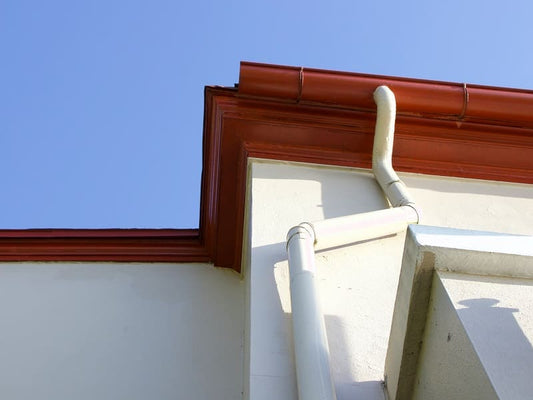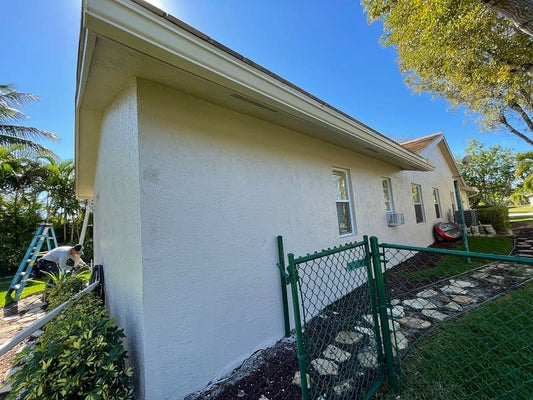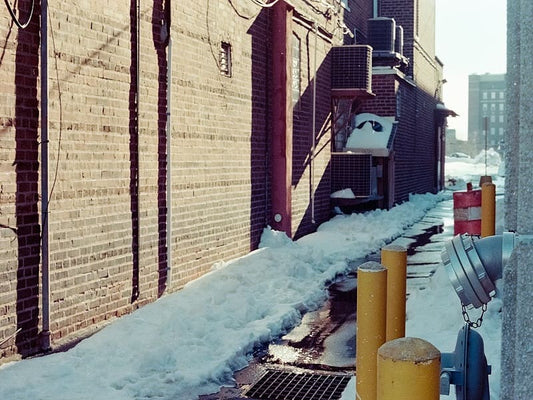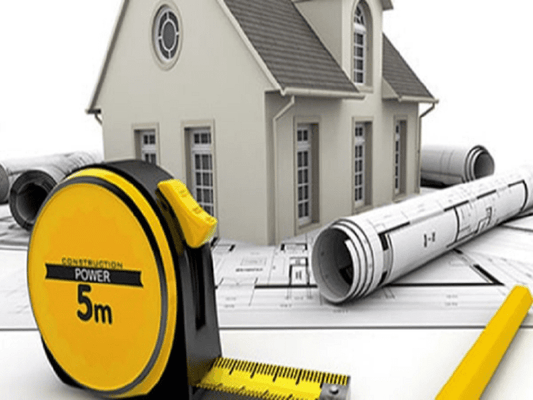
What are different gutter materials- A Complete Guide
What Are Gutters Made Of?
Rain gutters that function properly are critical to a roof. Your roof directs precipitation away from your home, but if your gutters are blocked, water will not drain properly, causing problems for your roof and the rest of your property.
However, the material of the gutter is the most significant consideration when installing one. Many homeowners are unsure about the ideal gutter material. In this article, we will discuss several gutter materials and their benefits and drawbacks. Keep reading!
Understanding Gutter
A gutter's primary function is to create a route for water to flow through. They are especially intended to decrease erosion by directing water to a drain or safe spot. Gutters have a limited capacity and may overflow, yet they nevertheless drain a considerable volume of water effectively. Rain gutters are commonly composed of aluminum, copper, steel, or vinyl and are attached to your roof.
Materials Used For Gutters
What materials are gutters made of? Choosing gutter material is one of several options to be made throughout the gutter repair process. However, it may have a significant impact on the appearance of your property as well as the lifespan of your gutters.
There are several gutter materials; however, your decision may be influenced by the design and style of your home, as well as the climate where you reside.
l Vinyl Gutters
Vinyl is one of the durable materials being used for the gutters. A vinyl gutter system is less expensive per lineal foot than any other gutter material. It's most likely why plastic rain gutters are so popular among homeowners. They are not only affordable but also long-lasting and require little maintenance. However, vinyl gutters, like any other type of rain gutter installation, have drawbacks. In severe temperatures, they are prone to breaking and fracturing. Furthermore, joints lose their capacity to be resealed over time.
l Aluminum Gutters
Among the various varieties of gutters, aluminum undoubtedly dominates the market for a variety of reasons. These are ,Corrosion-resistant, lightweight, Very simple to deal with, and Extremely cost-effective.
In contrast to vinyl, however, aluminum gutters are weatherproof and can preserve their integrity even in the coldest of temperatures. It's also rust-resistant and available in.030 or.028 gauge width for long-lasting usage in snowy areas like Long Island.
The best part is that aluminum gutters keep paint well and may be produced in seamless variants. The primary disadvantage of aluminum is that it is not as structurally robust as other materials and can dent or become deformed.
l Steel Gutters
Vinyl and aluminum gutters are two of the greatest types of gutters since they are cost-effective, which means they perform a good job for the money. They are also fairly pricey. Steel gutters are another excellent alternative, although they are more expensive. These gutters are the most durable and will not rust, so if you have the extra money to spend, they are an excellent investment. Steel gutters are noted for their durability and strength, and they are available in stainless or galvanized finishes.
Stainless Steel Gutters: These are difficult to come by owing to their high cost. While they never tarnish and may keep their luster for years, the substantial up-front purchase might be difficult for many people to swallow.
Galvanized Steel Gutter: One of the less costly gutter materials that can endure temperature changes. Despite its weight, this metal is incredibly easy to deal with. They are quite easy to cut and position in the right area. Galvanized steel gutters add a fashionable aspect to the property and are appreciated in most modern construction. They are also chlorinated water resistant. The corroded piece of this gutter is difficult to identify since the color matches the rust hue.
l Zinc Gutters
Strong and rustproof, it weathers to an appealing matte gray. Because of its high compression and extension rate when temperatures vary, professional installation is suggested. Seams are soldered, although it is a more complicated procedure than with copper. Depending on its closeness to saltwater, it can last between 30 and 50 years. Acidic discharge from cedar-shingled roofs puts it at risk. It costs between $9 and $10 per foot.
l Wood Guttering
Wood gutters are less common since they are more expensive, but architectural purists who are attempting to restore an ancient property will prefer them. However, be cautious since not all wood gutter materials are equally good at protecting your property from water damage.
l Copper Gutters
Because of its great quality, sturdiness, and resistance to corrosion, copper gutters are a popular material for seamless gutters. They are also highly robust and durable, having the capacity to endure falling debris, which is essential for any property in the wet Portland and Seattle areas. If properly maintained, a high-quality copper gutter installed by gutter installation specialists may endure centuries.
Copper gutters are not only durable, but they also look great and are ideal for historical homes. Copper gutters are a lovely choice for any Pacific Northwest property in need of a long-lasting gutter.
What Are The Recommended Gutter Materials?
If you're starting from scratch, there's a excess of forms, sizes, and materials to pick from. Aside from price, maintenance-intensive wood troughs and short-lived vinyl troughs, metal—elegant copper, unobtrusive zinc, robust steel, or economical aluminum—is the best option for most of us. Metal gutters are long-lasting and require little maintenance.
Maintenance Of Gutter Materials
Debris will eventually make its way into your gutters, and you or a gutter specialist will have to climb a ladder to clean them out. Here are some simple trade tips to make your job easier.
Make use of a standoff: It allows you to rest a ladder on the roof, which prevents gutter scratches and dents and increases ladder stability.
Begin at the downspout: It will allow standing water to drain.
Examine the elbows: If they are clogged, apply a strong hose spray to unclog them. Otherwise, disassemble them, drill out any rivets, and reinstall them using short stainless-steel sheet-metal screws.
Flush: After cleaning the gutters and reattaching the downspouts, water them down to ensure they're draining properly. It is very important for the shelf life of the gutter material.
Examine the brackets or hangers carefully: If the hardware is loose or if water gathers in low locations, tighten, move, or replace it.
Seal any leaks: When the gutter is dry, use a butyl-based gutter caulk to cover minor gaps and seams from the inside. Before applying the fresh caulk, scrape away the old and clean the surface.
Final Thoughts
You now have a better understanding of gutter materials, but making a final selection takes time. During your search, visit a few gutter installation businesses and be open about your demands and concerns. When it comes to choosing a gutter material, you should consider not only your budget but also the architectural style of your property and the climate in your location.
Whatever gutter material you choose for your property, engage with a competent gutter contractor to ensure that your gutters accomplish their job rather than generating additional difficulties.







